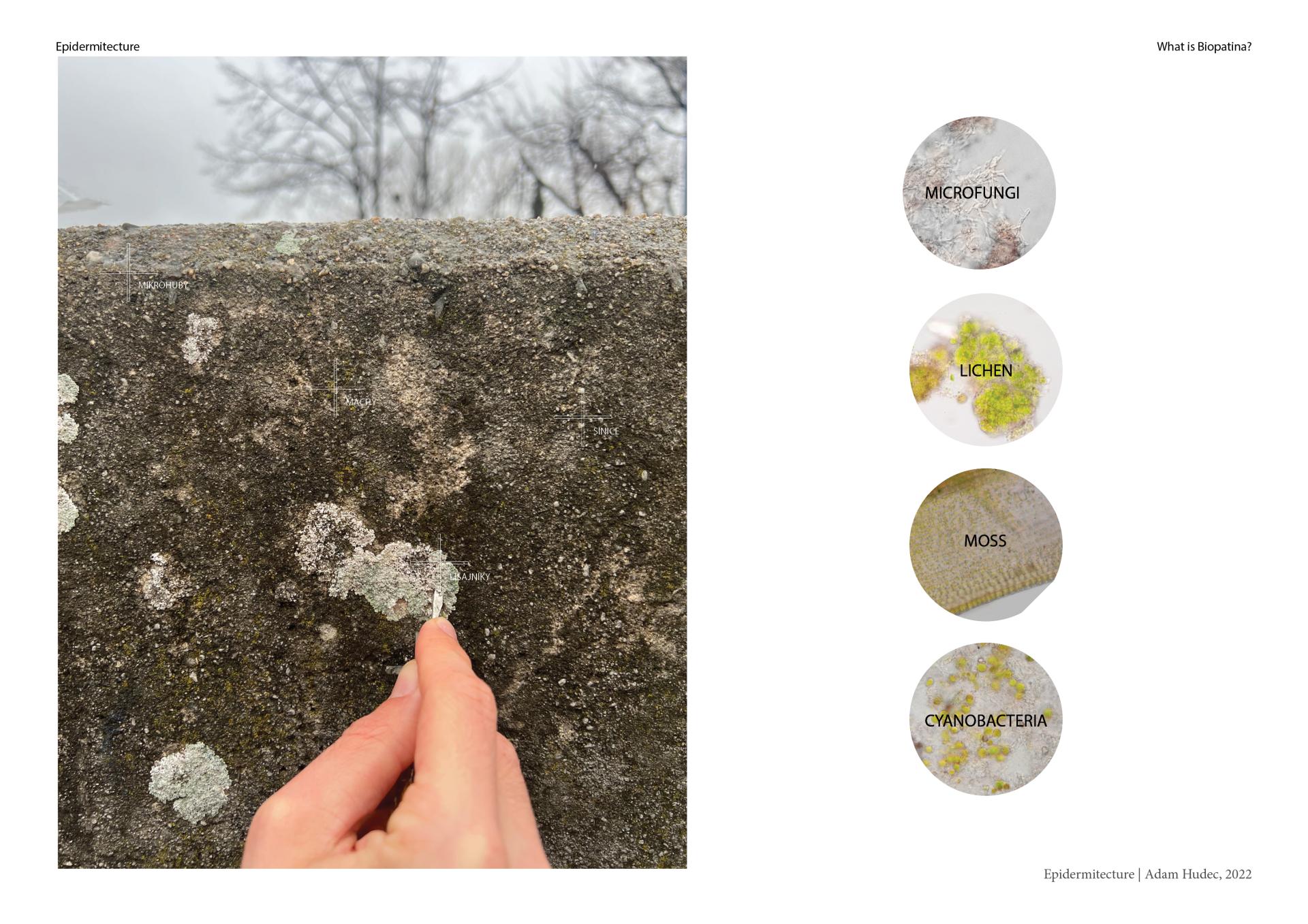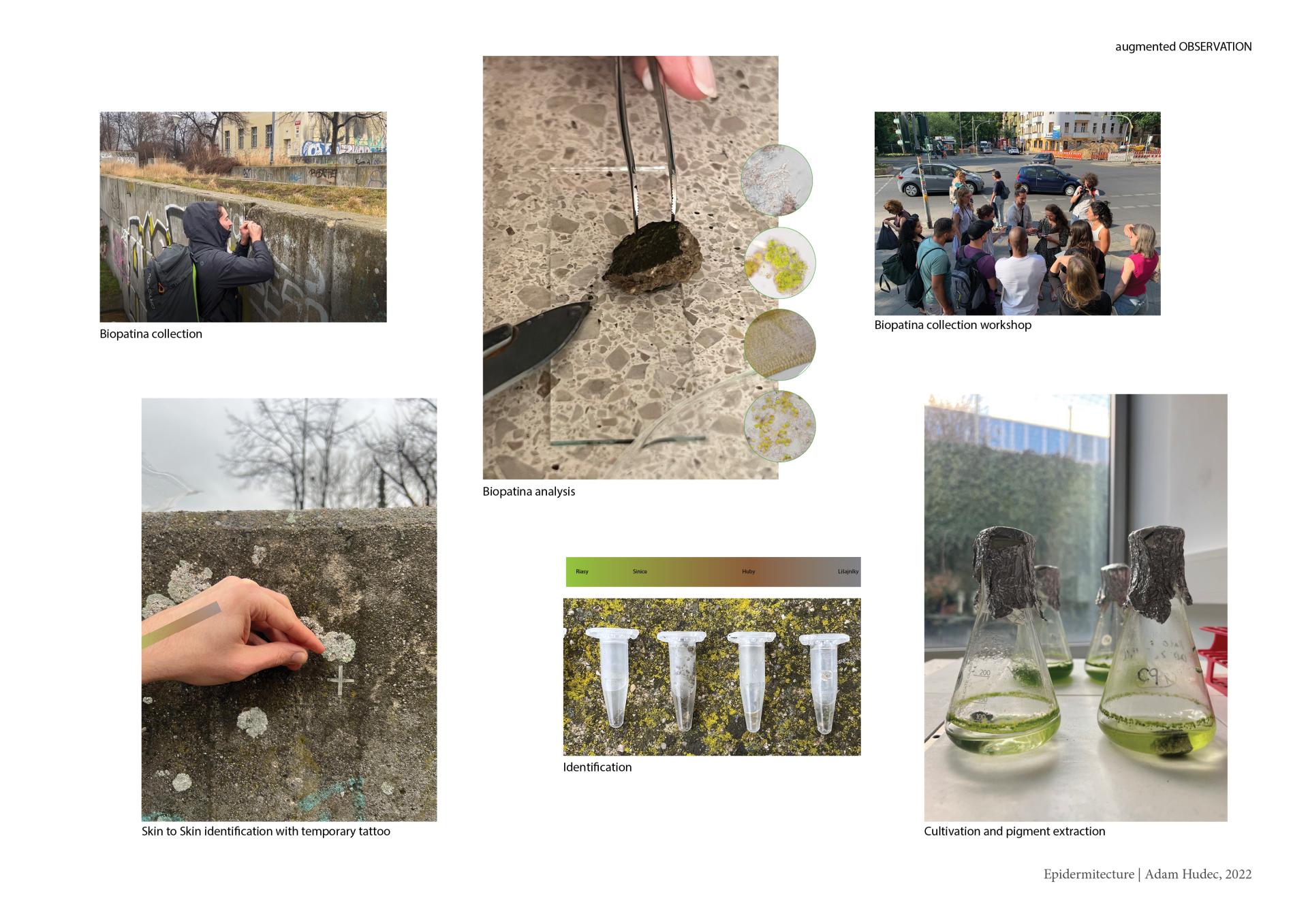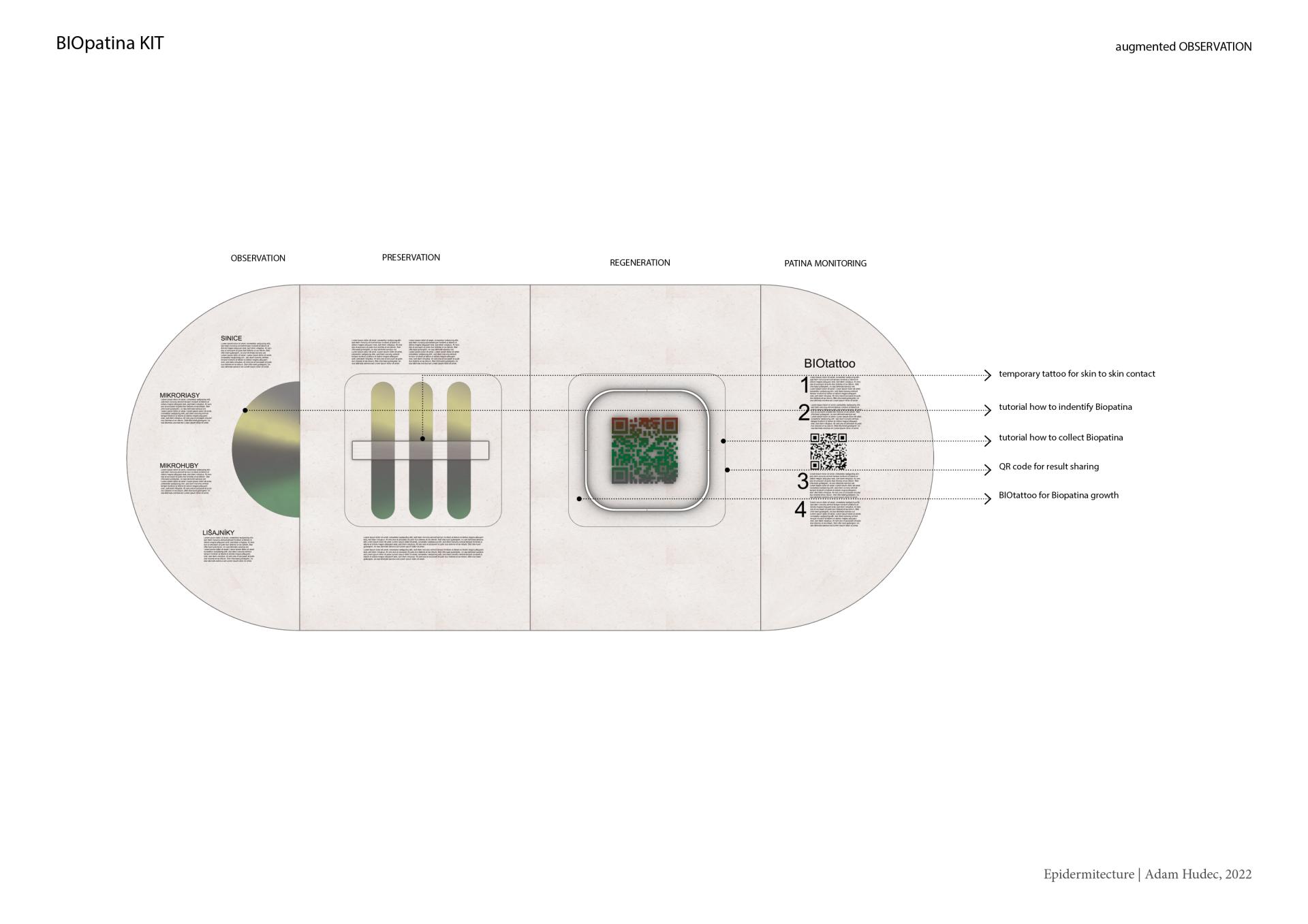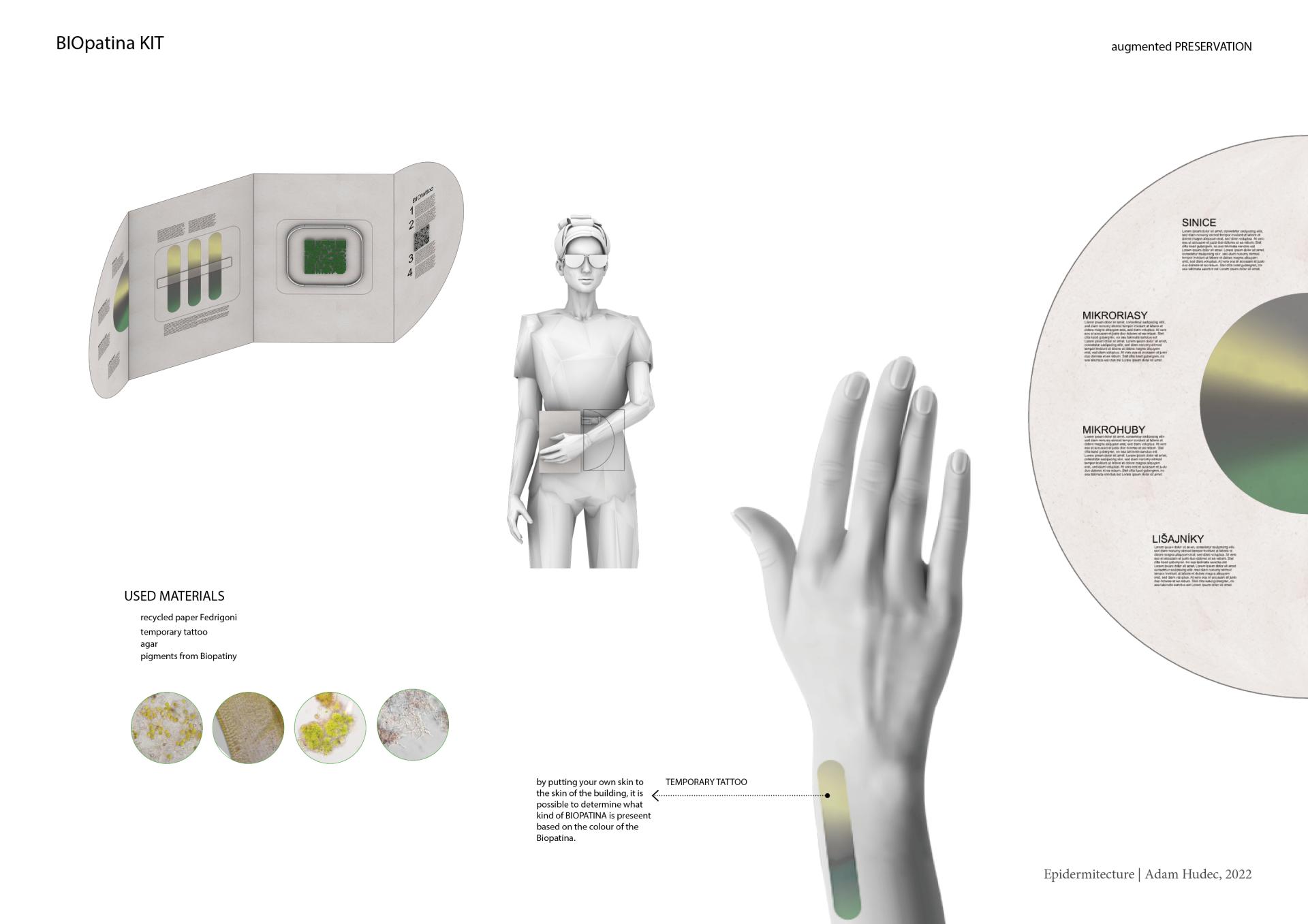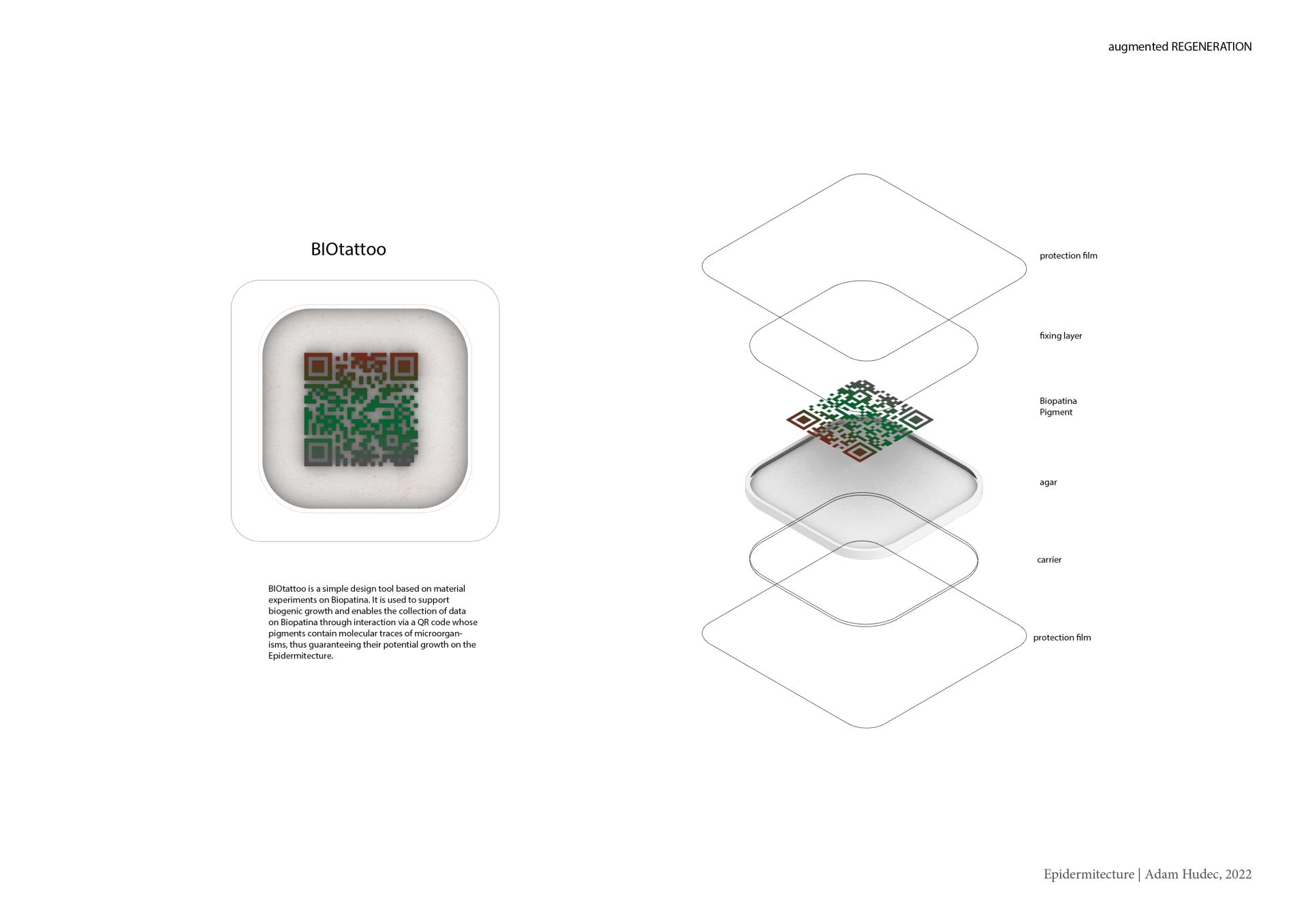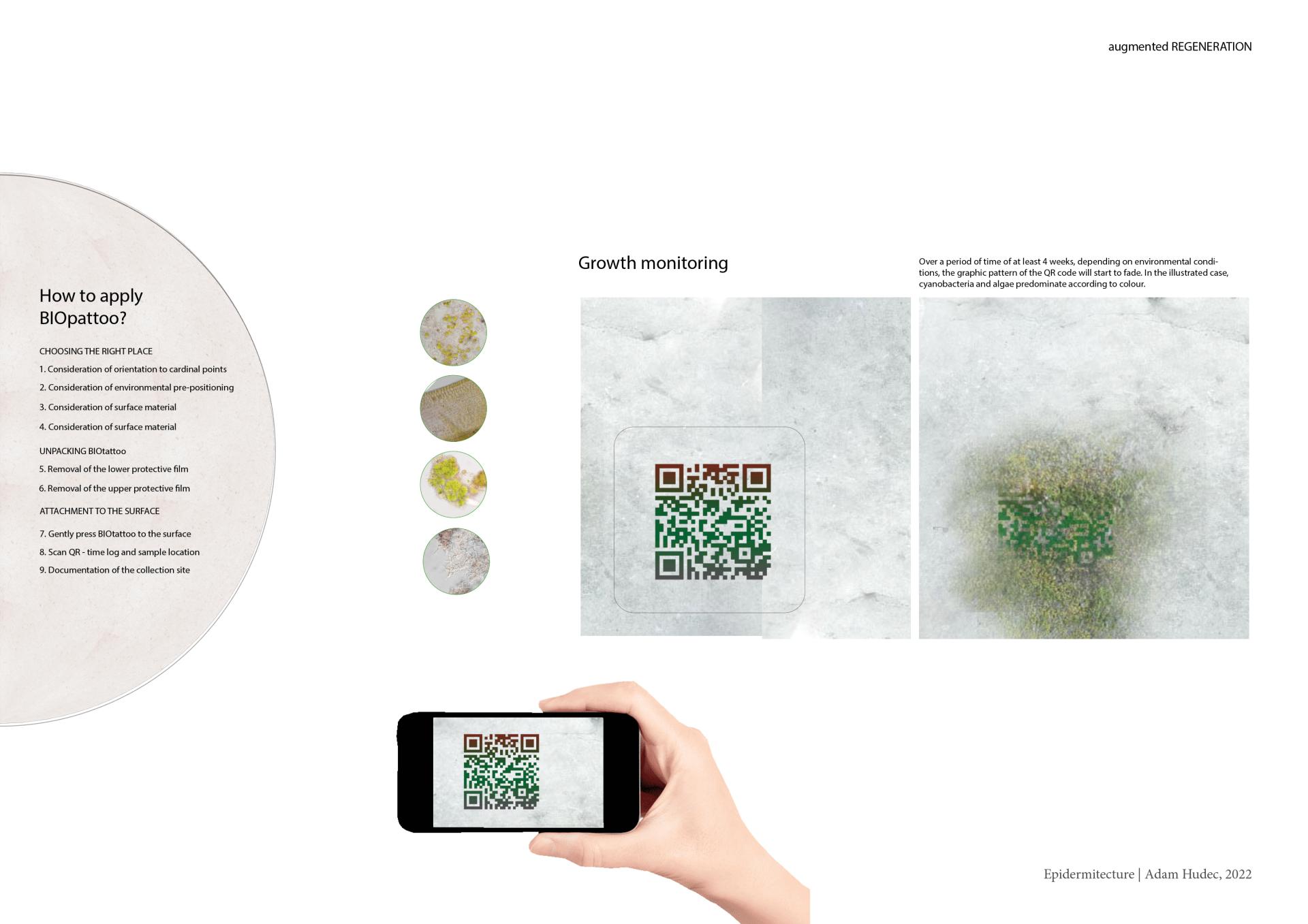Epidermitecture
Basic information
Project Title
Full project title
Category
Project Description
Epidermitecture explores the question on how a shallow layer of microorganism (referred as Biopatina) on buildings outermost skin can preserve and regenerate the environments. Contrary to contemporary discourse which conceives naturally occurring stains on surfaces as unwanted matter, this project attempts for the first time to enhance rather than suppress biogenic growth on buildings’ outermost skin. Thus, Biopatina can successfully absorb CO2 and other toxins from the environment.
Geographical Scope
Project Region
Urban or rural issues
Physical or other transformations
EU Programme or fund
Which funds
Description of the project
Summary
Epidermitecture explores the question of how a thin layer of microorganisms on buildings outermost skin (referred as Biopatina in this project) can protect and regenerate the environment. It is little known that these unwanted stains on buildings outermost skin are beneficial to the environment: they can absorb CO2 and other toxins from the air we breathe. The aim of the project is to question contemporary discourse of the visual understanding of the urban environment and architecture which acknowledges naturally occurring stains on surfaces as an undesirable matter and propose specific design tools and material experiments to support rather than suppress biogenic growth on the building outermost skin. The research assumptions emphasize that Biopatina and the building it inhabits must be treated and described as inseparable organisms. Therefore, Epidermitecture will investigate Biopatina directly in the environment where they thrive - outside of the white 'protected' gallery spaces. Within the theoretical framework of the project, I propose a unique research method, Augmentation, which combines geomicrobiological reserach, artistic research and Citizen Science with a focus on integrating the public in the design process. This method consciously leaves the context of the gallery spaces and explores the potential of creative practice to augment our sensorial perception and insight into nonhuman form of life. By implementing geomicrobiology into design and architecture, applying situational knowledge and working with the public, a discourse on how to co-exist with other life forms will be formed through the study of Biopatina, which inhabits the outer surface of architectures and thus contributes significantly to the aesthetical understanding of architecture and urban environments.
Key objectives for sustainability
This project takes the sustainability aspects very seriously. The ultimate goal during the production and development was to cut its carbon footprint as much as possible. Tracking app of carbon footprint calculator were used, while taking under consideration all measures how to eliminate carbon footprint; meetings were hold preferably online to reduce travel, all data have been stored offline, the slowest delivery options were used and express shipping method avoided, short distance delivery were realized by cargobike. Office electricity supply were chosen with highest percentage of renewable energy resources, team were eating vegan and from local markets, number of overhours cut to absolute zero.
Production of BioPatina Kit will be well planned to avoid any unexpected material loses. Main material is a recycled paper without chemical treatment. Design of the KIT reduce the usage of material. The entire Kit can be used multiple times, part of KIT is a number of tattoos, that can be delivered back once the collection of Biopatina is. These specimen are carefully stored for archival purposes and future projects. Attrament usage for printing were carefully examined during the design process and eco attrament were chosen for printing despite its higher initial costs.
Project BioPatina KIT is a showcase of sustainable project not only from the perspective of materiality, but also human resources. Every aspects of the project from development to the delivery of the product to communities was carefully examined in order to eliminate carbon footprint as much as possible, yet maintaining fair-pay for all parties in the project.
This project proposes a provocative idea of sustainable futures where being sustainable means to support biogenic growth on buildings outermost skin. Once we stop cleaning urban and architecture surfaces, naturally occuring stains will create thin layer of microorganism that can successfully filter toxins from the environment.
Key objectives for aesthetics and quality
We send away what we don't want, yet forced encounter with the rejected can have transforming potential when we recognize what is a part of us rather than something apart from us. Feedback can act as a potential "event" that allows us to see how our habits are problematic, and this information can lead to the possibility of change. When it comes to our interactions with the material world of nature and art, both are more than scenic or magnificent; they encapsulate the cultural links that we sometimes wish we could ignore and put securely out of sight or at a distance. As a result, encounters with the aestheticized object of rejection can offer as potential venues for encounter and, perhaps, transformation. Epidermitecture project strives for encounters of aesthetisation of unwanted stains on architecture surfaces - it is the only way how to prevent it further removal and fully explore its potential to help us combat the climate change and meet the goal of fully sustainable cities in the future.
Key objectives for inclusion
Epidermitecture puts special emphasis on the collaborative format of the project and on the inclusion of the public in the creative process. Biopatina collection will be organized as a series of workshops where participants will learn how to collect, cultivate, identify Biopatina. For this purpose, a special Biopatina Design Kit will be developed with instructions and tools on how to recognize Biopatina on facades of buildings. The design of the tool will be as inclusive as possible to serve a wide range of age groups: pupils and students, the general public, professionals, designers, architects and other professionals in related fields. Once Bio-tattoo is developed, the Biopatina Kit can be sent directly to the communities involved in the project - schools, leisure centres, associations. The results of the collection, analysis and cultivation of Biopatina on surfaces will then be able to be uploaded to a repository for further analysis of the results. The results of the public Biopatina collections will be documented and processed. Throughout the project public participation practices will be explored as a tool for raising awareness and knowledge transfer.
Physical or other transformations
Innovative character
By implementing art practise in scientific research, applying situated knowledge and working with Citizen Science practices, this project will nurture an augmented discourse on how to co-exist with nonhuman entities through studying the Biopatina (the thin layer of microorganisms) which inhabit Epidermitecture. Public engagement and knowledge accessibility are the core elements for the successful acceptance of Biopatina as an essential part of the environment where human and nonhuman life forms meet to create and celebrate a better future. In order to deal with the complexities of the proposed topic, Augmentation as a method aims to augment our sensorial experience and our perspective on Biopatina and propose ideas to observe, preserve and regenerate the Biopatina on Epidermitecture. Augmentation connects and sensitises the public to the potentialities of Biopatina (cyanobacteria, fungi, microalgae and lichen). By implementing geomicrobiology into design and architecture, applying situational knowledge and working with the public, a discourse on how to co-exist with other life forms will be formed through the study of Biopatina, which inhabits the outer surface of architectures and thus contributes significantly to the aesthetical understanding of architecture and urban environments.

